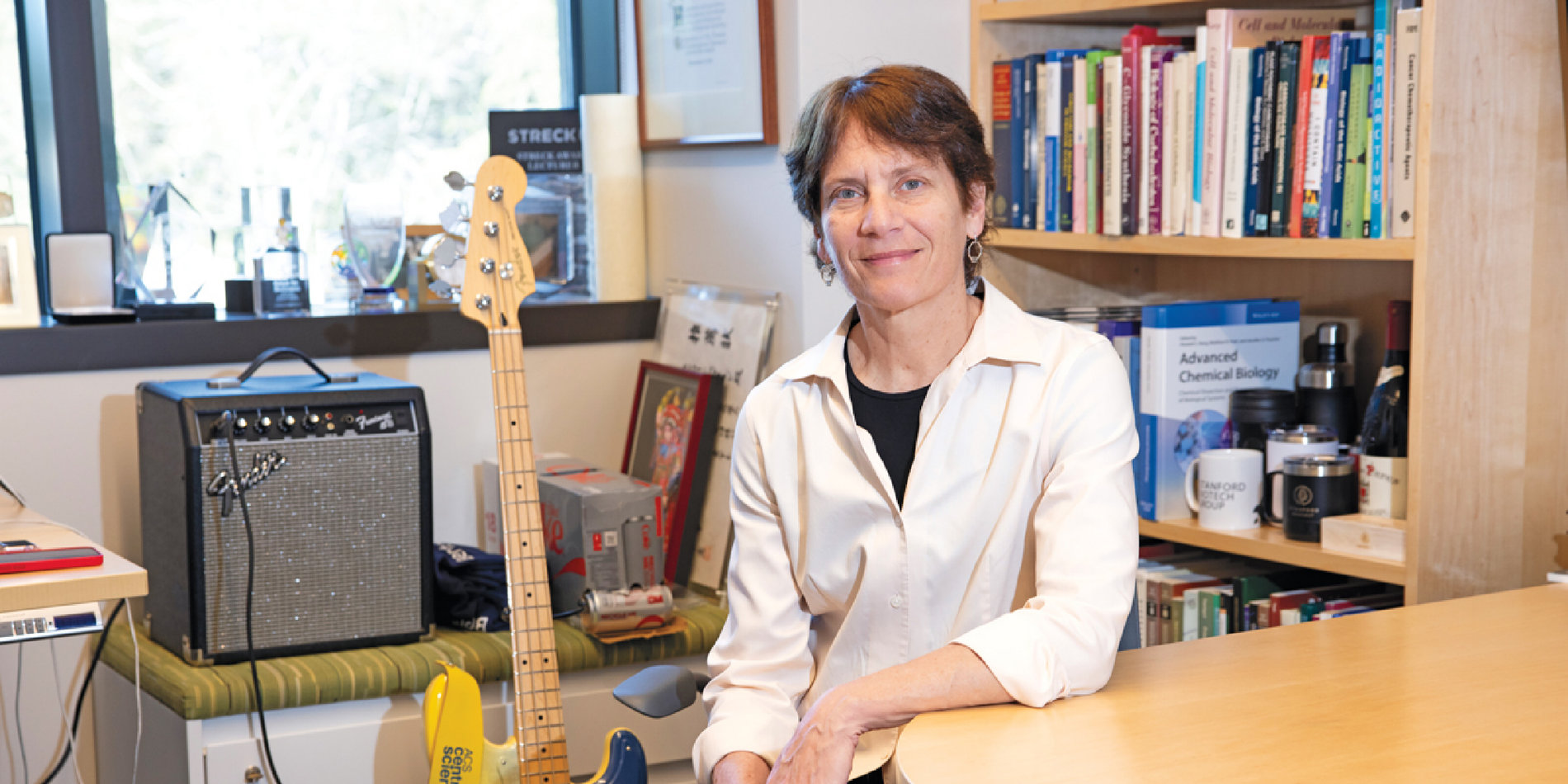Stanford researchers develop standardized method for extracting SARS-CoV-2 RNA from stool
There is a lot of stuff even in healthy poop. Proteins, fats, bacteria. But if you’ve recently been infected with COVID-19, your poop also contains genetic material from the virus that causes the disease, even long after symptoms have disappeared.
The questions for scientists who are hoping to use poop to study infections are how to separate that genetic material, or RNA, from all the other stuff and how to count the number of coronavirus RNA molecules within the poop.
In a recent paper published in Nature Communications, Stanford researchers tested several different methods of doing just that and recommend an optimal method for separating the RNA of SARS-CoV-2, the virus that causes COVID-19, from everything else in stool. The research, done in the lab of Ami Bhatt, associate professor of medicine and of genetics, was funded in part by a grant jointly awarded by Stanford ChEM-H and the Innovative Medicines Accelerator at Stanford. The authors hope that this RNA accounting method will help clinicians and scientists around the world to better predict patient outcomes and understand infection levels across populations.

For those who study the bacteria and viruses that live in and on our bodies, the toilet is not a surprising place to find evidence of a virus after a human has been infected. Feline coronavirus, for example, is transmitted between cats via feces. Previously, RNA from the coronavirus responsible for the 2002-2004 SARS outbreak was identified in stool, so early on researchers suspected that SARS-CoV-2 could be similar.
Aravind Natarajan, a postdoc in the Bhatt lab and co-first author on the study, explained that what is surprising about SARS-CoV-2 is how long it is present in stool after a patient recovers. Other research has shown that it can be found for up to 120 days after infection. The Bhatt lab’s original motivation was to study if the virus is being shed in stool, how much is being shed, and how that amount changes over time.
Initially the researchers believed preserving the stool and extracting the viral RNA would be the easy part. Instead, they found no consensus in the literature for an optimal method to monitor viral RNA in stool.
“A lot of different studies use different criteria, different methods for testing, and different ways of storing the stool,” explained Alvin Han, the other co-first author of the study and a PhD student co-advised by Denise Monack and Bhatt. “All of this makes it very difficult for an apples-to-apples comparison of the results of the studies.”
Han and Natarajan set out, once and for all, to develop an optimal procedure for isolating and measuring RNA from stool samples. The method would allow researchers around the world to easily isolate maximum RNA from stool samples, to allow a true comparison of studies. “There’s always room for optimization and sometimes it’s helpful to take a step back and think critically about what can be improved,” said Han.
The journey from patient to lab bench begins with preservation of the stool sample. In most previous studies, the scientists had collected samples and stored them without any special preservative. However, stool contains natural molecules that can break down RNA. The researchers evaluated different techniques for stool preservation, separation, and quantification of the RNA, to determine the best method for each step. Han and Natarajan focused on techniques that resulted in the most detectable RNA and that would be usable by researchers in different settings, from small research labs to large-scale clinics.
“We were very conscious throughout the process to identify methods that are scalable,” said Natarajan.
The real test of their final three-step pipeline was how well it would work on samples collected outside the well-controlled experimental setting of a lab. The team applied it to stool collected from a clinical trial of a possible COVID-19 treatment in the Stanford School of Medicine and found that their method allowed them to reliably measure the amount of RNA, a result that they hope will encourage widespread adoption of their technique.
The ability to consistently measure viral RNA in stool samples will be useful in future COVID-19 research. For example, viral RNA in stool may be correlated with patient outcomes, and the length of time that it remains in stool may indicate how effective the immune system is against SARS-CoV-2. Accurately measuring viral RNA can be applied to wastewater-based epidemiology, work currently being done by co-author Alexandria Boehm. Samples collected from sewage treatment plants can be analyzed to estimate how much of the virus is in a population, so researchers can survey the spread of the disease in real-time.
The authors have applied for a patent and are using the methods for ongoing research in the lab. The techniques can also be applied to detecting other coronaviruses in the future. “The main hope for me is that other researchers read this and see our proposed pipeline as reasonable and worth using,” said Han.
Bhatt is a faculty fellow at Stanford ChEM-H and is also a member of Bio-X, the Cardiovascular Institute, the Maternal & Child Health Research Institute, and the Stanford Cancer Institute. Other Stanford co-authors include Soumaya Zlitni, Erin F. Brooks, Summer E. Vance, Marlene Wolfe, Upinder Singh, Prasanna Jagannathan, and Benjamin A. Pinksy.



